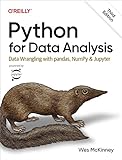To count the combinations of unique values per group in pandas, you can use the groupby() function to group your data by a specific column, and then apply the nunique() function to count the unique combinations within each group. This will give you the count of unique values per group in the specified column. This is particularly useful for analyzing categorical data and understanding the distribution of values within different groups in your dataset.
How to deal with duplicates when counting unique values per group in pandas?
To deal with duplicates when counting unique values per group in Pandas, you can use the drop_duplicates() function to remove duplicate values before counting unique values. Here is an example code snippet to illustrate this:
1 2 3 4 5 6 7 8 9 10 11 12 13 14 |
import pandas as pd # Create a sample DataFrame data = {'group': ['A', 'A', 'B', 'B', 'B', 'C'], 'value': ['1', '1', '2', '3', '3', '2']} df = pd.DataFrame(data) # Drop duplicate values within each group df_unique = df.drop_duplicates() # Count unique values per group unique_counts = df_unique.groupby('group')['value'].nunique() print(unique_counts) |
In this example, we first create a sample DataFrame with groups and values. We then use the drop_duplicates() function to remove duplicate values within each group. Finally, we use the groupby() and nunique() functions to count the unique values per group. The unique_counts variable will contain the count of unique values for each group.
What is the benefit of using groupby and agg functions in combination when counting unique values in pandas?
Using the groupby and agg functions in combination in pandas allows for efficient and concise computation of counts of unique values within different groups of a dataset. By grouping the data based on certain criteria and then applying the agg function to count the unique values within each group, one can easily summarize and analyze the data. This approach is particularly useful when working with large datasets or when needing to perform complex data manipulations. Additionally, the ability to specify multiple aggregation functions within the agg function allows for flexibility and customization in how the data is summarized.
What is the role of data normalization in counting unique values per group in pandas?
Data normalization is essential in counting unique values per group in pandas as it helps in standardizing the data by bringing all the values to a similar scale. This ensures that the counts are accurate and not skewed by varying magnitudes of the data.
Normalization also helps in reducing the impact of outliers and improves the accuracy of calculations by ensuring that all values are on a comparable scale. This is particularly important when counting unique values per group, as it allows for a fair comparison among different groups and helps in making meaningful insights from the data.
What is the significance of counting unique values in a dataset?
Counting unique values in a dataset is significant for several reasons:
- Data quality: Identifying unique values helps to detect any inconsistencies or errors in the dataset. For example, if a variable that should only have a few unique values has many more, it could indicate data entry errors or other issues.
- Data exploration: Counting unique values can provide insights into the distribution of data within a dataset. It can help to identify patterns, trends, or outliers that may not be apparent when looking at the raw data.
- Data preprocessing: Before conducting any analysis or modeling, it is often necessary to preprocess the data by removing duplicates or outliers. Counting unique values is an important step in this process.
- Data visualization: Unique value counts can help in creating informative visualizations that summarize the data in a meaningful way. For example, a bar chart showing the frequency of unique values can provide a quick overview of the data distribution.
Overall, counting unique values in a dataset is a fundamental step in data analysis that helps in understanding, cleaning, and preparing the data for further analysis or modeling.









